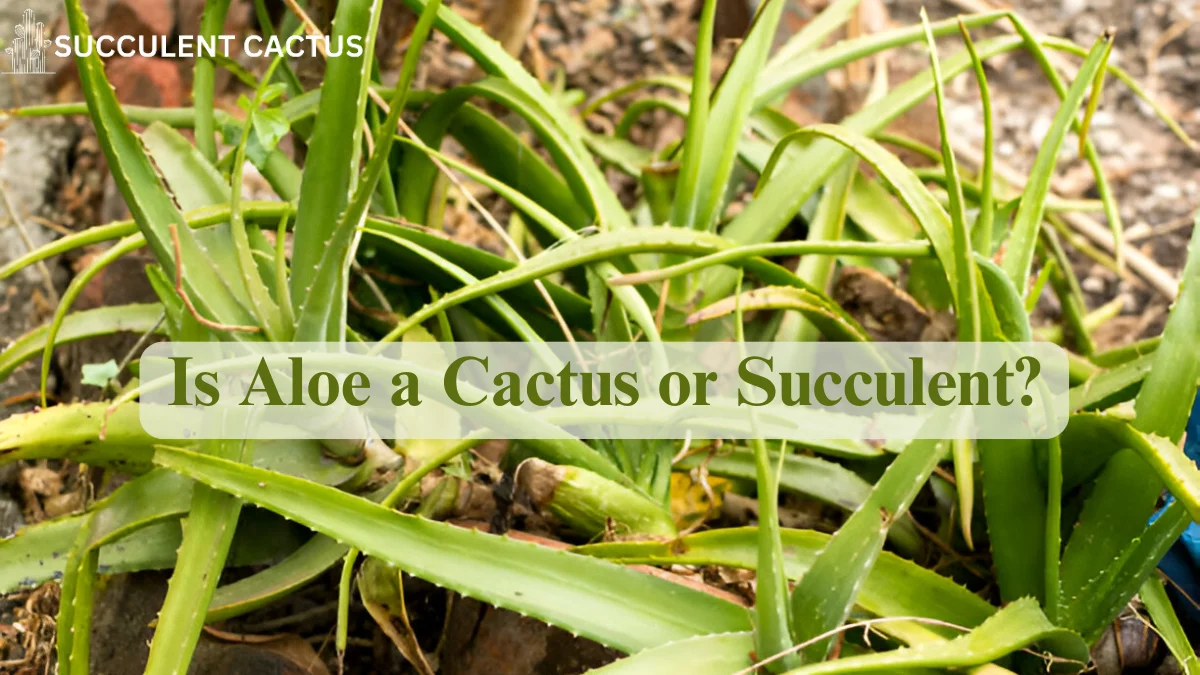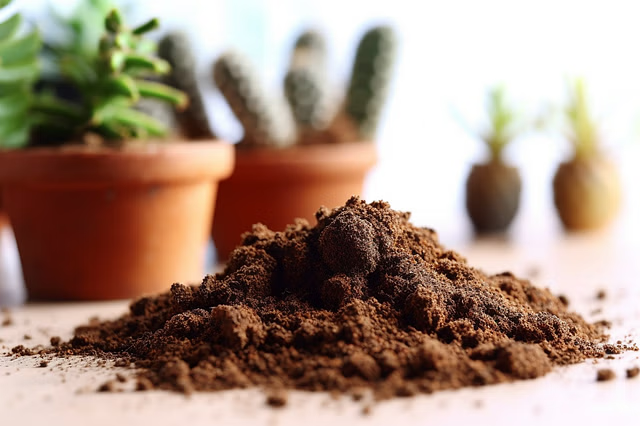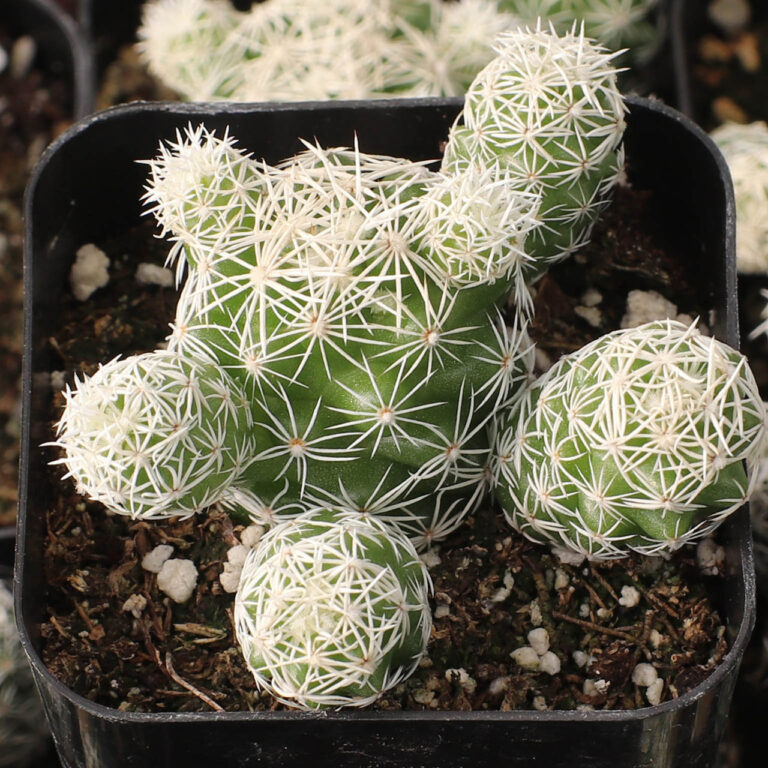Is Aloe a Cactus or Succulent? Understanding the Differences and Similarities

Aloe is one of the most popular plants in the succulent world, known for its attractive rosettes and valuable medicinal properties. But one common question that often arises is: Is aloe a cactus or succulent? While both plants are often grouped, they have distinct characteristics and belong to different plant families. In this in-depth article, we’ll explore the differences between cacti and succulents, delve into the specific traits of aloe, and clarify why aloe is a succulent rather than a cactus.
Understanding Cacti: A Unique Plant Family
Before we can understand the nature of aloe, it’s essential to define what a cactus is. Cacti are unique plants belonging to the Cactaceae family, characterized by several distinct features that set them apart from other plants.
The Unique Characteristics of Cacti
Cacti are well-known for their adaptations to arid environments. These plants are designed to survive in hot, dry conditions, thanks to their specialized structures.
- Spines Instead of Leaves: Cacti typically have spines instead of leaves, which reduce water loss and protect the plant from herbivores.
- Water Storage: Cacti store water in their stems, which allows them to survive long periods of drought.
- Flowers: Most cacti produce large, colorful flowers that bloom at night or in the early morning.
Cactus Families and Species
The Cactaceae family includes a wide variety of species, ranging from small, ornamental plants to large, towering saguaros. Popular cactus varieties include:
- Saguaro (Carnegiea gigantea): Known for its iconic tall, branching structure.
- Prickly Pear (Opuntia): Characterized by flat, rounded pads and bright, edible fruit.
- Barrel Cactus (Ferocactus): Known for its round shape and ribbed, spiny surface.
Where Do Cacti Grow?
Cacti are native to the Americas, particularly the deserts of North and South America. They thrive in dry, hot environments but can also adapt to a variety of climates.
- Deserts of North America: Cacti are commonly found in deserts like the Sonoran, Mojave, and Chihuahuan.
- Tropical Cacti: Some cactus species grow in more humid, tropical environments, such as the rainforests of Central and South America.
What is a Succulent?
Succulents, like cacti, are plants that have developed specialized structures to store water. However, unlike cacti, succulents do not belong to a single family and include a variety of plant types with distinct characteristics.
Key Features of Succulents
Succulent plants are highly diverse but share some common features that make them stand out in the plant kingdom.
- Water Storage: The primary trait of succulents is their ability to store water in their leaves, stems, or roots.
- Fleshy Leaves or Stems: Succulent plants often have thick, fleshy leaves or stems that help retain moisture.
- Variety of Forms: Succulents can take many different forms, including rosettes, trailing vines, and tall, tree-like structures.
Popular Succulent Families
Succulents belong to many different families. Some of the most popular succulent families include:
- Crassulaceae: This family includes plants like jade plants and echeveria.
- Aloaceae: The aloe family, which includes aloe vera and many other species of aloe.
- Cactaceae (Some Succulent Species): While cacti are a distinct family, some cacti are considered succulents because of their ability to store water.
Where Do Succulents Grow?
Succulents are found in many different climates, from arid deserts to humid coastal regions. They are particularly abundant in regions with irregular rainfall or areas where droughts are common.
- Deserts and Arid Regions: Many succulents are native to arid environments, such as those in Africa, the Americas, and Australia.
- Tropical Regions: Some succulents, like the jade plant, grow in tropical climates with ample sunlight and occasional rainfall.
Aloe: A Succulent Plant
It is a genus of succulent plants, which means it is part of the succulent family rather than the cactus family. Aloe plants are part of the Asphodelaceae family, not the Cactaceae family.
Aloe’s Unique Features
Aloe plants share several key features with other succulents, including the ability to store water in their leaves. However, aloe also has some distinctive characteristics that set it apart from other succulents.
- Rosette Growth Habit: Aloe plants typically grow in a rosette pattern, with leaves arranged in a circular shape around the central stem.
- Fleshy Leaves: The leaves of aloe are thick and fleshy, helping to store water and protect the plant from dehydration.
- Aloe Gel: The gel found inside aloe leaves is well-known for its medicinal uses, particularly for skin healing and soothing burns.
Aloe Vera: The Most Famous Aloe Species
Aloe vera is the most well-known species in the aloe genus. It has a long history of use in traditional medicine, especially for its skin-soothing properties.
- Medicinal Uses: Manufacturers use aloe vera gel in many products, including lotions, creams, and burn ointments.
- Health Benefits: People recognize aloe vera for its anti-inflammatory properties and consume it in small amounts to aid digestion.
Where Do Aloe Plants Grow?
Aloe plants are native to Africa, particularly the Arabian Peninsula. They can also be found in parts of the Mediterranean and Asia.
- Hot, Dry Climates: Aloe plants thrive in hot, dry climates where they can store water in their fleshy leaves.
- Cultivation Worldwide: People now cultivate aloe in many parts of the world, including Australia, the United States, and Europe, due to its medicinal and aesthetic value.
Differences Between Aloe and Cactus
While both aloe and cactus are succulent plants, they have some important differences that set them apart. Let’s take a closer look at these differences in terms of structure, growth habits, and environment.
Structural Differences: Leaves vs. Spines
One of the most noticeable differences between aloe and cacti is the structure of their leaves.
- Aloe: Aloe plants have thick, fleshy leaves arranged in rosettes. These leaves are not spiny but are often smooth or slightly serrated.
- Cacti: Cacti, on the other hand, typically have spines instead of leaves. These spines help reduce water loss and protect the plant from predators.
Growth Habits: Rosette vs. Columnar
Aloe plants usually grow in a rosette pattern, with leaves arranged in a circular formation around the central stem. In contrast, many cacti grow in columnar or spherical shapes, with the plant growing vertically or into large, rounded forms.
- Aloe: Aloe plants have a compact, rosette growth habit, which is ideal for conserving moisture and protecting the plant from the sun.
- Cacti: Cacti tend to grow in tall, upright forms, often developing ribs and spines that help with water storage and protection.
Environmental Adaptations: Water Storage
Both aloe and cacti are adapted to dry conditions, but their water storage strategies differ. Aloe plants store water in their thick leaves, while cacti store water in their stems. This difference in water storage affects how each plant survives in the wild.
- Aloe: Aloe stores water in its fleshy leaves, allowing the plant to survive droughts without needing to rely on its roots.
- Cacti: Cacti store water in their swollen stems, which can hold large amounts of moisture for long periods.
Aloe’s Role in the Plant World
Aloe’s popularity extends beyond its medicinal uses. The plant has become a beloved addition to many gardens, homes, and landscapes. It is easy to care for, drought-tolerant, and adds an attractive, sculptural element to any setting.
Aloe in Landscaping
People often use aloe plants in xeriscaping, a landscaping technique designed to conserve water with drought-tolerant plants. Aloe is a perfect candidate for xeriscaping because it requires little water and can thrive in dry conditions.
- Xeriscaping Benefits: Aloe plants reduce the need for irrigation, making them an eco-friendly choice for landscaping.
- Aesthetic Appeal: Aloe’s striking rosettes and tall flower spikes make it an attractive focal point in gardens and landscapes.
Aloe as an Indoor Plant
In addition to its use in outdoor gardens, people grow aloe as a popular indoor plant. They easily cultivate it in containers and place it on windowsills or in bright rooms.
- Low Maintenance: Aloe requires very little care, making it ideal for busy individuals or beginner gardeners.
- Air Purification: Like many succulents, aloe improves indoor air quality with its air-purifying properties.
Aloe in Commercial Products
Aloe’s popularity in skincare, cosmetics, and health products is a significant part of its value. Manufacturers use the gel inside aloe leaves in many consumer products, ranging from lotions and ointments to beverages and supplements.
- Skincare Benefits: People renown aloe for soothing burns, moisturizing skin, and reducing inflammation.
- Health Products: Marketers promote aloe vera juice as a digestive aid and use it in various health supplements.
Aloe Care and Maintenance
While aloe is a relatively low-maintenance plant, it does require specific care to ensure it thrives. Understanding the best conditions for aloe growth is key to maintaining a healthy plant.
Ideal Growing Conditions for Aloe
Aloe plants thrive in bright light, warm temperatures, and well-drained soil. Ensuring that your aloe receives the right amount of light and water is crucial for its survival.
- Light: Aloe needs bright, indirect light to grow well. Too much direct sunlight can cause the plant to scorch.
- Soil: Aloe prefers well-draining, sandy soil. Avoid using heavy, moisture-retentive soils that can lead to root rot.
Watering Aloe Plants
Aloe is a drought-tolerant plant and does not require frequent watering. It’s best to let the soil dry out between waterings to prevent root rot.
- Watering Frequency: Water your aloe once every two weeks or when the soil is dry to the touch.
- Watering Tips: Water the plant thoroughly but ensure that the pot has proper drainage to prevent excess water from sitting at the bottom.
Fertilizing Aloe
Aloe plants generally do not require much fertilization. You can apply a balanced, diluted fertilizer during the growing season, but excessive fertilization can lead to weak, spindly growth.
- Fertilizing Frequency: Aloe does not need frequent fertilizing, but a mild fertilizer every 4–6 weeks during the growing season can encourage healthy growth.
- Organic Fertilizer: Consider using organic fertilizers like compost or worm castings to feed your aloe without overwhelming it with nutrients.
Aloe and Its Medicinal Uses
People have used aloe for centuries for its medicinal properties. The gel inside aloe leaves has become a staple in herbal medicine, particularly for treating skin conditions.
Aloe for Skin Care
People widely know aloe for its ability to soothe burns and skin irritation. Manufacturers use it in many over-the-counter products like creams, gels, and lotions.
- Burn Relief: People commonly apply aloe vera gel to minor burns and sunburns for its cooling and healing properties.
- Moisturizer: Manufacturers often include aloe in lotions and creams for its hydrating effects as a natural moisturizer.
Aloe is an Anti-Inflammatory
Aloe’s anti-inflammatory properties make it useful for treating conditions like arthritis and skin inflammation.
- Arthritis Treatment: Aloe vera gel or juice may help reduce inflammation and pain in joints when applied topically or consumed.
- Skin Inflammation: Aloe’s cooling effect helps reduce swelling and redness associated with skin conditions like acne or eczema.
Aloe for Digestive Health
People often consume aloe vera juice as a digestive aid, thinking it promotes digestion and relieves constipation.
- Digestive Aid: People believe that aloe vera juice helps soothe the digestive tract, reducing symptoms of acid reflux and constipation.
- Cleansing Properties: Marketers often promote aloe as a natural detoxifier and include it in cleanses and detox products.
Aloe in Other Cultures
Various cultures have used aloe for centuries, with its uses spanning from medicinal to cosmetic. Its reputation as a healing plant, often referred to as an aloe cactus or succulent, has made it an integral part of many traditional practices.
Aloe in Ancient Egypt
The ancient Egyptians were one of the first civilizations to recognize the benefits of aloe. It is said that Cleopatra used aloe to keep her skin soft and youthful.
- Cosmetic Uses: People used aloe in skincare preparations for its moisturizing and healing effects.
- Medicinal Uses: People also used aloe to treat wounds and burns.
Aloe in Traditional Chinese Medicine
Traditional Chinese medicine values aloe for its ability to balance the body’s internal systems. Healers often use it as a tonic to improve digestion and relieve constipation.
- Digestive Aid: People think aloe promotes better digestion and detoxifies the liver.
- Anti-inflammatory: Chinese medicine also uses aloe to treat skin conditions and inflammation.
Aloe in Western Herbalism
Western herbalists consider aloe a healing herb, using it for centuries to treat burns, wounds, and digestive issues.
- Healing Properties: Aloe’s antibacterial and anti-inflammatory properties make it useful for healing cuts and wounds.
- Health Tonic: People often consume aloe vera juice to improve overall health and aid digestion.
Aloe’s Role in Modern Medicine
Modern science has supported aloe’s medicinal benefits, and researchers continue to explore its potential applications.
Aloe for Wound Healing
Scientific studies have shown that the aloe cactus or succulent is highly effective in promoting wound healing, particularly for burns and cuts.
- Studies on Aloe: Research has demonstrated that aloe gel can accelerate the healing process for minor burns and wounds.
- Application Methods: People apply aloe gel directly to the skin to help with healing.
Gel Plant (aloe) for Digestive Disorders
Aloe vera juice has gained popularity as a treatment for digestive disorders such as acid reflux, irritable bowel syndrome (IBS), and constipation.
- Digestive Benefits: People believe that aloe vera juice soothes the digestive tract and promotes regular bowel movements.
- Scientific Evidence: Clinical studies have shown that aloe can help manage constipation and improve overall digestive health.
Gel Plant (aloe) in Cancer Treatment
While aloe is not a cure for cancer, some studies suggest it may have supportive benefits for cancer patients, particularly for its anti-inflammatory properties.
- Cancer Research: Some studies have suggested that aloe may help reduce inflammation associated with cancer treatment.
- Complementary Therapy: People may use aloe as a complementary therapy alongside conventional cancer treatments.
The Growing Popularity of Aloe in Home Gardening
Aloe, often debated as an aloe cactus or succulent, is an easy-to-grow plant that has gained popularity among home gardeners. Its adaptability, beauty, and low maintenance make it a favorite choice for both novice and experienced gardeners.
Aloe as a Popular Indoor Plant
Aloe plants are commonly grown indoors because they require minimal care and thrive in containers.
- Container-Friendly: Aloe grows well in pots, making it suitable for indoor gardening.
- Decorative Appeal: Aloe’s rosettes and tall flower spikes add visual interest to any room.
Gel Plant (aloe) in Outdoor Gardens
Outdoor gardens also use aloe, particularly in xeriscaping and drought-tolerant landscapes.
- Xeriscaping Benefits: Aloe is an excellent choice for water-wise gardens.
- Aesthetic Value: Aloe plants add structure and texture to garden designs, particularly in desert-themed landscapes.
Gel Plant (aloe) as a Low-Maintenance Garden Plant
Aloe’s ability to thrive with minimal attention makes it an ideal plant for busy gardeners.
- Drought-Tolerant: Aloe requires little water, making it an ideal choice for water-conserving gardens.
- Low Maintenance: Aloe needs minimal care, making it a perfect choice for beginners.
Gel Plant (aloe) and Sustainability
Aloe’s low water requirements and adaptability make it a sustainable choice for landscaping and gardening. As the world faces environmental challenges, aloe’s water-conserving qualities make it an eco-friendly option for gardeners and landscapers.
Water Conservation
One of the most significant benefits of aloe is its ability to thrive with minimal water, making it an excellent plant for drought-prone areas.
- Drought-Tolerant: Aloe plants can survive in dry conditions, helping to conserve water.
- Sustainable Landscaping: Aloe is an essential part of xeriscaping and sustainable landscaping practices.
Eco-Friendly Gardening
By incorporating aloe into your garden, you can reduce water usage and create a more sustainable landscape.
- Water-Efficient: Aloe helps reduce the need for irrigation, making it an eco-friendly gardening choice.
- Low Environmental Impact: Aloe’s low maintenance and minimal water needs contribute to a more sustainable garden.
Aloe’s Role in Conservation
Conservation efforts often use aloe, particularly in regions affected by drought or desertification.
- Restoration Projects: Environmental restoration projects use aloe to reclaim arid land.
- Conservation Efforts: Aloe’s resilience makes it an essential plant for sustainable land management.
The Future of Aloe Cultivation
Aloe’s future in horticulture and medicine looks promising, with ongoing research and cultivation efforts to expand its use worldwide.
Advancements in Aloe Research
As research continues, scientists are discovering new ways to harness aloe’s healing and medicinal properties.
- New Medical Applications: Ongoing studies are exploring aloe’s potential for treating chronic conditions like diabetes and cancer.
- Improved Cultivation Techniques: Advances in agricultural practices are making it easier to cultivate aloe on a larger scale.
Aloe in the Global Market
Aloe’s popularity continues to rise, particularly in the health and wellness industry. The demand for aloe in cosmetics, skincare, and medicinal products is expected to grow.
- Cosmetics Industry: Aloe is a key ingredient in many skincare products due to its soothing and moisturizing properties.
- Health and Wellness: Aloe vera juice and supplements continue to gain popularity as natural remedies for digestive issues and inflammation.
Sustainability in Aloe Production
As demand for aloe increases, sustainable cultivation practices will play a crucial role in preserving the plant and ensuring its continued availability. Whether it’s referred to as an aloe cactus or succulent, understanding its needs is essential for promoting responsible growth and usage.
- Eco-Friendly Farming: Farmers are making aloe farming more sustainable by adopting water-conserving practices.
- Long-Term Growth: Aloe’s resilience and adaptability make it a sustainable crop for the future.
FAQs
1. Is aloe a cactus or succulent? Aloe is a succulent, not a cactus. The Asphodelaceae family includes aloe, known for its thick, fleshy leaves that store water.
2. Can aloe grow in full sun? Yes, aloe plants thrive in bright, indirect sunlight. While they enjoy sunlight, prolonged exposure to intense direct sun can cause sunburn.
3. How often should you water an aloe plant? You should water aloe plants only when the soil feels dry to the touch, as they are drought tolerant. Typically, watering once every two weeks is sufficient.
4. What is aloe vera used for? People widely use aloe vera for its medicinal properties, especially to soothe burns, moisturize skin, and promote digestive health.
5. Can aloe vera be grown indoors? Yes, aloe vera makes an excellent indoor plant. It requires minimal care and can thrive in containers with proper drainage.
Conclusion
Aloe vera, with its distinct characteristics and a wide array of uses, remains one of the most versatile plants on the planet. Whether you’re wondering if it’s an aloe cactus or succulent, exploring its medicinal properties, cultivating it with ease, or using it in sustainable gardening practices, aloe consistently impresses. From the soothing gel to its ability to thrive in various climates, this plant proves its worth in both traditional and modern contexts. As research into its benefits expands and sustainability becomes increasingly important, aloe is likely to play an even more significant role in the future.






